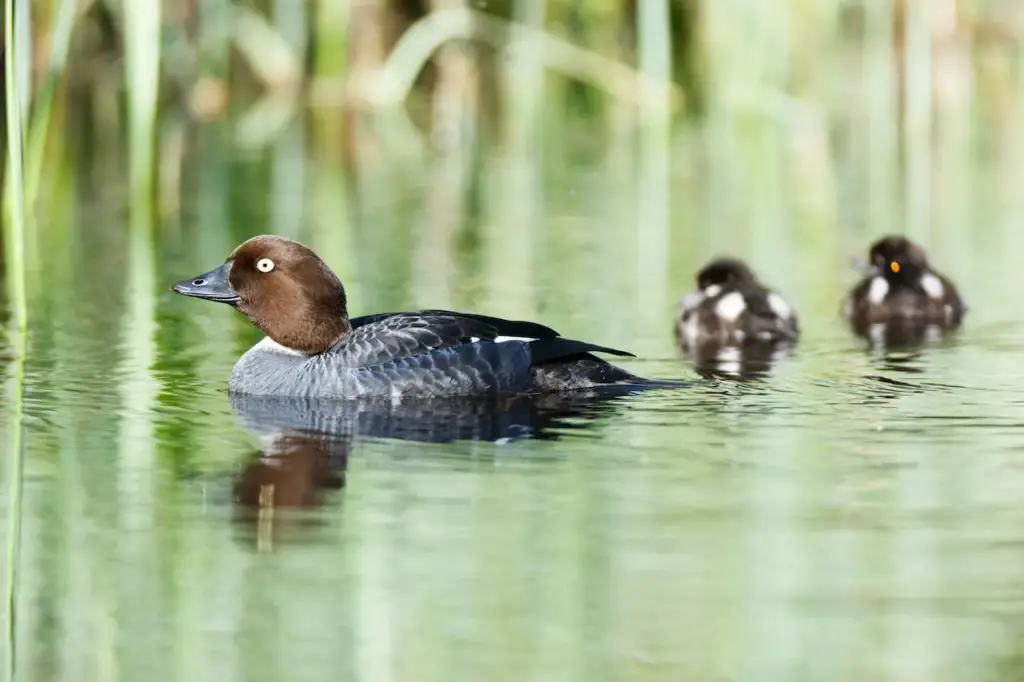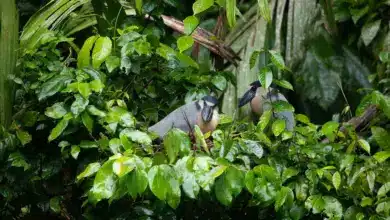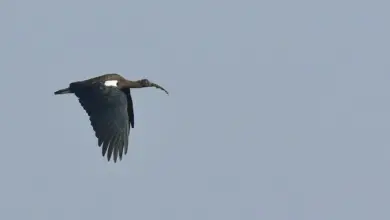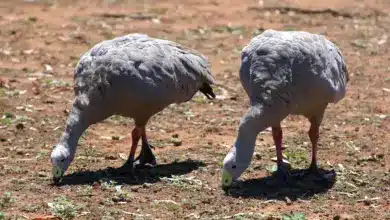Sea Ducks (Merginae)
Sea ducks (Merginae) are marine outside the breeding season, although some of the mergansers prefer riverine habitats. The majority of the species occur in far northern latitudes.

Recognized Species.
Subfamily Merginae
- Genus Chendytes, the diving-geese. These birds became extinct in prehistoric times. They were large, goose-like ducks with reduced wings which were unfit for flying, but could assist in diving as in the Great Auk. At least one species survived to the Holocene.
- Law’s Diving-goose Chendytes lawi : The Law’s Diving-goose was a goose-sized flightless sea-duck, once common on the California coast, California Channel Islands, and possibly southern Oregon. It lived in the Pleistocene and survived into the Holocene. It appears to have gone extinct about 1800 BC. Its remains have been found in fossil deposits and in early archeological sites. It was probably driven to extinction by hunting and loss of habitat.
- Genus Polysticta
- Steller’s Eider Polysticta stelleri
- Genus Somateria, the eiders. These are large marine ducks The drakes have body plumage showing varying amounts of black and white, and distinctive head patterns. Females are brown.
- Common Eider Somateria mollissima
- Spectacled Eider Somateria fischeri
- King Eider Somateria spectabilis
- Genus Histrionicus
- Harlequin Duck Histrionicus histrionicus
- Genus Camptorhynchus
- Labrador Duck Camptorhynchus labradorius
- Genus Melanitta, the scoters. These are stocky marine ducks. The drakes are mostly black and have swollen bills. Females are brown.
- Common Scoter Melanitta nigra
- Black Scoter or American Scoter Melanitta americana (sometimes considered a subspecies of M. nigra)
- Velvet Scoter Melanitta fusca
- White-winged Scoter Melanitta deglandi (sometimes considered a subspecies of M. fusca)
- Surf Scoter Melanitta perspicillata
- Genus Clangula
- Long-tailed Duck or Oldsquaw Clangula hyemalis
- Genus Bucephala, the goldeneyes. These are less marine than some species in this group, and will winter on fresh water. Drakes have white bodies with black backs and distinctive head markings. Females are grey with chestnut heads.
- Common Goldeneye Bucephala clangula
- Barrow’s Goldeneye Bucephala islandica
- Bufflehead Bucephala albeola
- Genus Mergellus (sometimes included in Mergus)
- Smew Mergellus albellus
- Genus Lophodytes (sometimes included in Mergus)
- Hooded Merganser Lophodytes cucullatus
- Genus Mergus, the typical mergansers. These are the least marine of this group, only Red-breasted being common on the sea. These are large saw-billed ducks which dive for fish.
- Brazilian MerganserMergus octosetaceus
- Auckland Islands Merganser Mergus australis
- Red-breasted Merganser Mergus serrator
- Common Merganser or Goosander Mergus merganser
- Chinese Merganser Mergus squamatus

Relevant Resources
Diet / Feeding:
The fish-eating members of this group, such as the mergansers and Smew, have serrated edges to their bills to help them grip their prey. These are therefore often known as “sawbills”. Other seaducks take mollusks or crustaceans from the sea floor.
Many species have developed specialized salt glands to allow them to tolerate salt water.
Sea Ducks generally feed on larvae and pupae usually found under rocks, aquatic animals, plant material, seeds, small fish, snails and crabs.
Feeding Ducks …
We all enjoy ducks and many of us offer them food to encourage them to come over and stay around – and it works! Who doesn’t like an easy meal!
However, the foods that we traditionally feed them at local ponds are utterly unsuitable for them and are likely to cause health problems down the road. Also, there may be local laws against feeding this species of bird – so it’s best to check on that rather than facing consequences at a later stage.
- Foods that can be fed to Ducks, Geese and Swans to survive cold winters and remain healthy when food is scarce in their environment.
Please note that feeding ducks and geese makes them dependent on humans for food, which can result in starvation and possibly death when those feedings stop. If you decide to feed them, please limit the quantity to make sure that they maintain their natural ability to forage for food themselves – providing, of course, that natural food sources are available.





